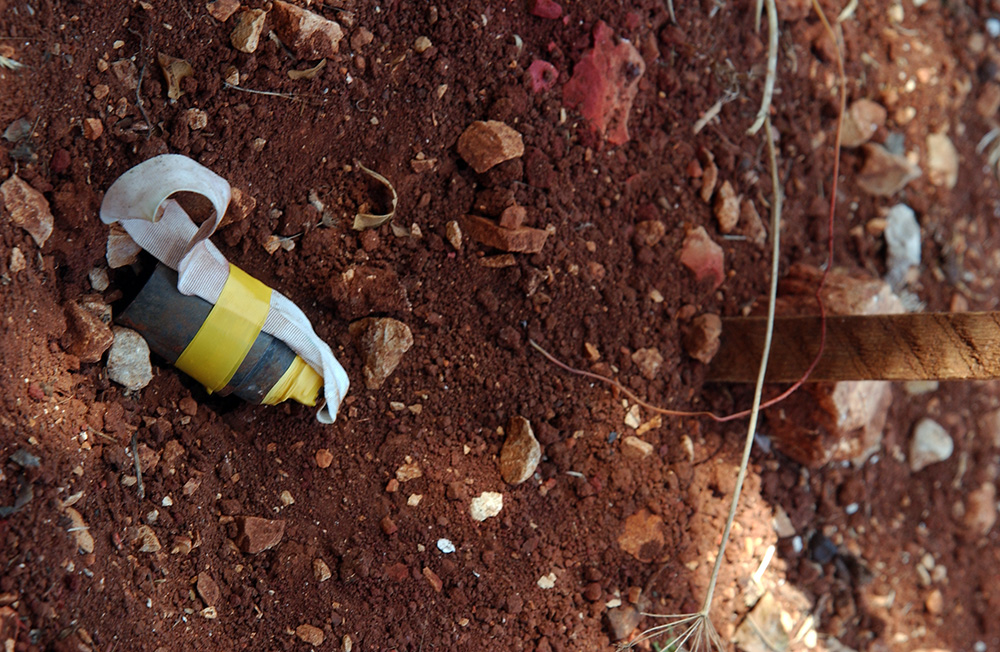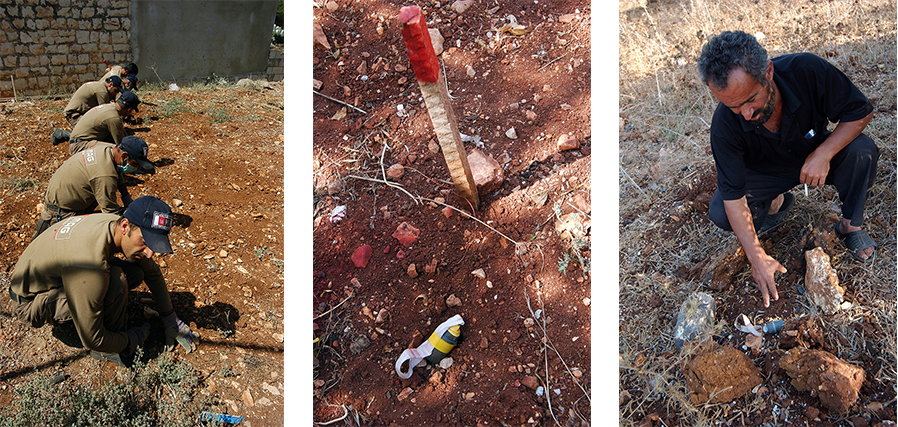
A cluster bomb that has been marked awaits removal. Phot. Norbert Schiller
President Joe Biden’s decision to supply Ukraine with cluster bombs is a difficult pill to swallow considering that over 100 countries have banned the weapon from their arsenal. Cluster bombs were first designed during WWII to disrupted troop movement. One parent ordnance dropped from a plane can release hundreds of smaller bombs that in turn detonate as they land killing and maiming troops on the ground. The biggest problem with cluster bombs is that many do not detonate posing a danger for many years to the civilian population.

A member of Mines Advisory Group (MAG) points to where the cluster bombs were found and marked in the family’s yard. Members of MAG search for cluster bombs near a home in South Lebanon. Phot. Norbert Schiller
My experience with cluster bombs goes back to 2006 when Hezbollah fought a one-month war with Israel. For months after the conflict ended, I had numerous assignments in south Lebanon to cover the work of the Mines Advisory Group (MAG) to disarm and dispose of the unexploded munitions. Hezbollah may have been blamed for starting the conflict, but it was Israel that upped the ante by attacking civilian targets and infrastructure and dropping cluster bombs on population centers. Since Hezbollah had no infantry to speak of, cluster bombs proved to be useless in deterring their fighters who moved about in small groups largely undetected.

Members of MAG search for cluster bombs near a home (L). A cluster bomb that has been marked awaits removal (C). A father who lost his son to a cluster bomb points to another one that he found on his property. Phot. Norbert Schiller
According to Human Rights Watch, during the last 72 hours of that conflict, the Israelis dropped an estimated 4 million cluster bombs on South Lebanon. To make things worse, many of these bombs were old stock from the 1970s, so they didn’t detonate upon impact leaving vast tracks of land littered with unexploded ordnance. As a result, farmers were unable to harvest their crops for fear of stepping on one of these devices. Even worse, many civilians, mostly children, were either maimed or killed from picking up the bombs thinking they were harmless. One of the families that I visited lost a son when a cluster bomb got dislodged from a tree and fell on him while he picked fruit. Here is a selection of photos I took of cluster bombs in south Lebanon and a link to a story I wrote about the Hezbollah Israel war.

A family holds up a picture of one of their children who was killed by a cluster bomb while picking fruit from a tree. The father shows where the parent ordnance that carried the cluster bombs landed in his field. Phot. Norbert Schiller